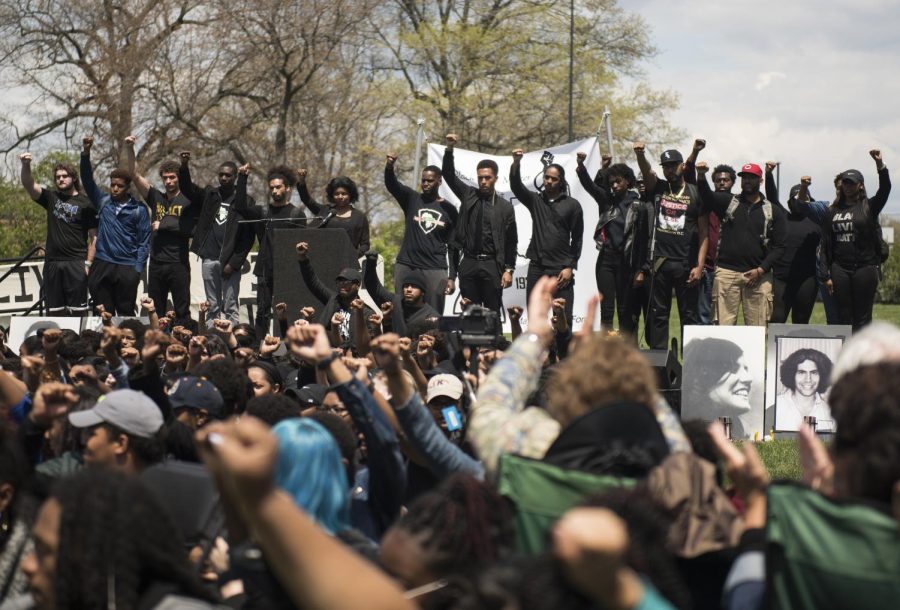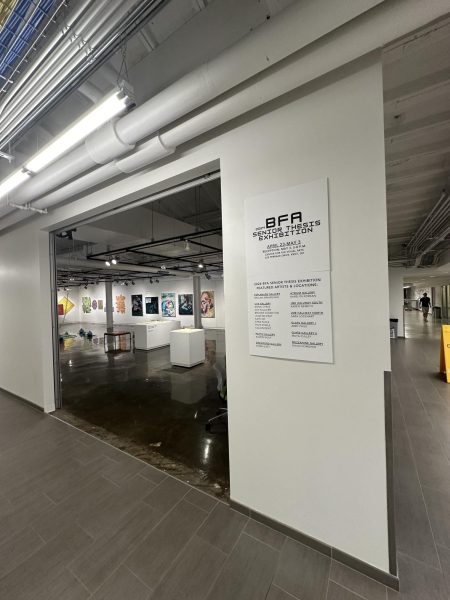Black United Students celebrates 50 years
February 20, 2019
Black United Students at Kent State is preparing for its 50th anniversary. As it approaches, past and present members remember the past and look to the future.
Since its start in May 1968, BUS developed into an organization recognized for its advocacy of social justice for people of color, and African-American students in particular.
According to the university website, the philosophy of BUS “is to serve and unify all black students at Kent State University by addressing their needs. It seeks to identify relevant issues … to reduce or eliminate any impediments to be adverse to students.”
The organization was founded during a period of intense activism. BUS focused its early initiatives on inclusion as members questioned why Kent State did not provide events and activities that reflected their own cultures and experiences.
Eugene Shelton, co-chairman of the diversity and globalization committee for the School of Journalism and Mass Communication and an associate professor, remembers participating in a large walkout staged by BUS during his time as a Kent State student.
Shelton identified with the values of equality BUS promoted for black students. He reminisced on how politically active BUS was during this period of time, so much that he went to his home in Cleveland to proudly announce the reason why he walked out of his classes in November 1968.
He explained to his father that he and fellow BUS members felt mistreated and excluded at Kent and expected his parents to be proud of his personal decision.
Shelton recounts how his father immediately told him to go back to Kent campus and attend his classes. Shelton said his father understood how critical education was and wanted nothing to get in the way.
“My father gave me a tongue lashing,” Shelton said, laughing. “I was thinking he would be proud of me because he was an advocate of equal rights.”
The mass walkout Shelton participated in led to
the Institute for African American Affairs being developed in 1969, the Center of Pan-African Culture (CPAC) in 1970 and the Department of Pan-African Studies first opening in 1976 at Kent State.
Shelton said his experience at Kent State during the 1960s and 1970s was very different compared to today.
“We all segregated ourselves,” Shelton said. “All the black students ate in the cafeteria together and the white students ate together. There were a few exceptions where people would blend and had friends, but I remember this campus pretty much being a segregated campus in that regard.”
Shelton said BUS was involved in protests against inequalities and lack of inclusion on Kent’s campus—issues he said are still prevalent today in the ongoing struggle for equality.
“I had to clearly understand winning the rights of equality in this country and being treated fairly, something which our constitution says we have this right to, but that constitution did not recognize us as human beings,” Shelton said. “Those words did not apply to us.”
BUS provided a platform for African American students to display their own culture and express themselves, Shelton said. BUS led many protests, walkouts and demonstrations on campus throughout Shelton’s time at Kent State.
“The organization is important to African American students at Kent State and their existence, life and study,” Shelton said.
Mwatabu Okantah, assistant professor and director of the center of Pan-African Culture in Oscar Ritchie Hall, started as a student in 1970 and became an active member of BUS in 1971.
BUS allowed the black communities at Kent State to express themselves and cultures to the fullest extent, Okantah said. They felt the curriculum that was being taught at Kent State at the time was not historically accurate as it did not include the legacy of African Americans.
“You could go to the university and take classes and learn absolutely nothing about the contributions of black people to this country and in the world,” Okantah said.
Okantah said BUS was instrumental in developing cultural activities and programs which included inviting guest speakers to campus, performing art exhibits and hosting concerts for students to socialize and form their own sense of community.
“It was about creating space for ourselves on campus,” Okantah said. “We weren’t trying to destroy the campus, we weren’t trying to overturn the campus, but we were saying to campus, ‘We are here, and you need to talk to us about what we need as opposed to dictating to us about what we need and what we want.’”
When reflecting on the longevity of the organization, Okantah said the dedication of the founding members of BUS paved the way for more awareness of diversity in terms of ethnicity, religion and sexual orientation at Kent State.
This has resulted in organizations like the Spanish and Latino Student Association (SALSA) and the Student Multicultural Center (SMC) being formed and continually developing and gaining more of a prominent voice.
“One could say as a result of the work of Black United Students and this department, none of this stuff would be on this campus,” Okantah said.
Professor Shelton’s son, Jason Shelton, was an active member of BUS from his freshman year and served as president in 1996 and 1997.
Jason Shelton said serving as president of BUS was an enriching experience that taught him the values of leadership and what it takes to make difficult decisions.
“One of the biggest lessons I learned in life is that there is a whole lot that goes on behind closed doors and things seem one way but there may be another story,” Jason said.
Jason said his focus while he served as president was to bring awareness to inequalities affecting African Americans in Northeast Ohio and around the United States.
“It was about making sure that African American students felt welcome on campus, that we had our outlet to be successful, whether that was in the class or outside of the class,” Jason said. “We need these organizations to continue to speak up to highlight issues that are prevalent in our society. If nobody speaks up about an issue, we cannot address it.”
BUS represents an entire group of like-minded individuals working together to preserve the black experience throughout American history, in both a historical and contemporary context, Jason said.
“When you are talking about Black United Students, it is a microcosm of American history,” Jason said. “The story of African-Americans in this country is the story of American history. It is a part of who we are as a country and where we have been, where we are going and how we get there. So, the story of black united students is essentially the underdog story of American history.”
Dartalia Alati, the current president of BUS, has been involved in the organization since 2015. Alati said she takes her role as president of such a historic organization very seriously.
“To see what BUS has done for this university is so exciting and exhilarating,” Alati said. “I’ve seen what they’ve done, and it makes me want to leave my mark.”
Alati said BUS is an organization that represents all disenfranchised groups on campus.
“We try to allow students to have a voice on this campus,” Alati said. “If they feel disrespected, if they feel unheard, we want to be a safe landing place for them.”
BUS looks ahead to the future with hope not only for African American students but for all disenfranchised groups of people. Shelton said there is much more progress to be made for social injustices that still affect black communities and other marginalized communities across the country.
“We’ve come a long way but there is still a long, long way to go,” Shelton said.
Tyler Haughn is a general assignment reporter. Contact him at [email protected].























